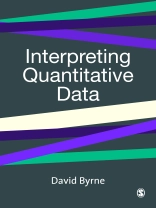How do quantitative methods help us to acquire knowledge of the real world? What are the `do′s′ and `don′ts′ of effective quantitative research?
This refreshing and accessible book provides students with a novel and useful resource for doing quantitative research. It offers students a guide on how to: interpret the complex reality of the social world; achieve effective measurement; understand the use of official statistics; use social surveys; understand probability and quantitative reasoning; interpret measurements; apply linear modelling; understand simulation and neural nets; and integrate quantitative and qualitative modelling in the research process.
Jargon-free and written with the needs of students in mind, the book will be required reading for students interested in using quantitative research methods.
Содержание
Introduction
Interpreting the Real and Describing the Complex
Why We Have to Measure
The Nature of Measurement
What We Measure and How We Measure
The State′s Measurement
The Construction and Use of Official Statistics
Measuring the Complex World
The Character of Social Surveys
Probability and Quantitative Reasoning
Interpreting Measurements
Exploring, Describing and Classifying
Linear Modelling
Clues as to Causes
Coping with Non-Linearity and Emergence
Simulation and Neural Nets
Qualitative Modelling
Issues of Meaning and Cause
Conclusion
Об авторе
David Byrne is Emeritus Professor of Sociology and Applied Social Sciences at the University of Durham. He has published widely on the methodology of social research, for example, in Interpreting Quantitative Data (2002) and with Charles Ragin edited The SAGE Handbook of Case Based Methods (2009). His major theoretical engagement is with the deployment of the complexity frame of reference across the social sciences—see Complexity Theory and the Social Sciences: The State of the Art (with Gillian Callaghan, 2011) with a particular focus on application to policy and practice. His current research focus is on the implications of the transition to the post-industrial in welfare capitalism—Paying for the Welfare State in the 21st Century (with Sally Ruane, 2011) and Class After Industry (2018).












